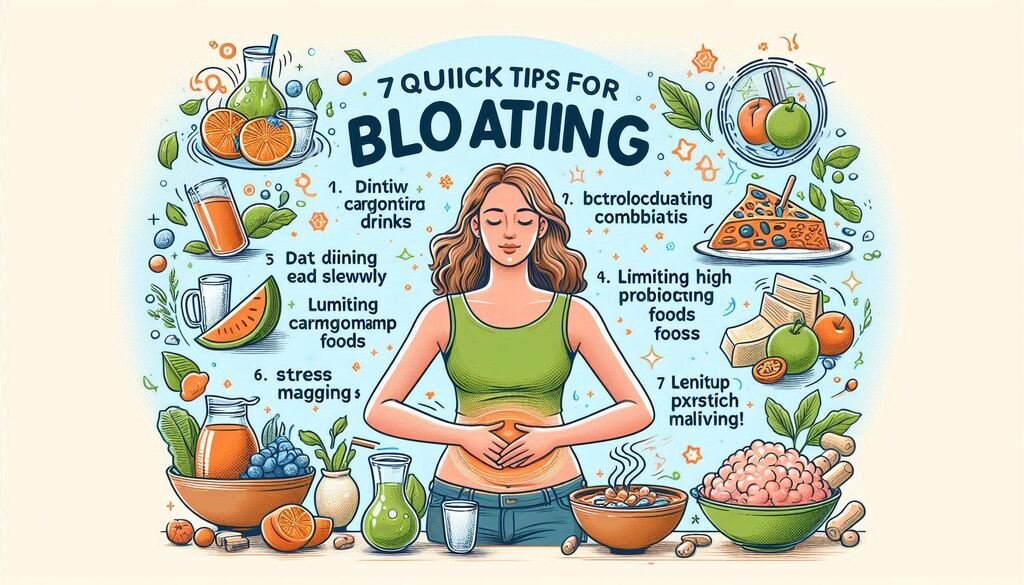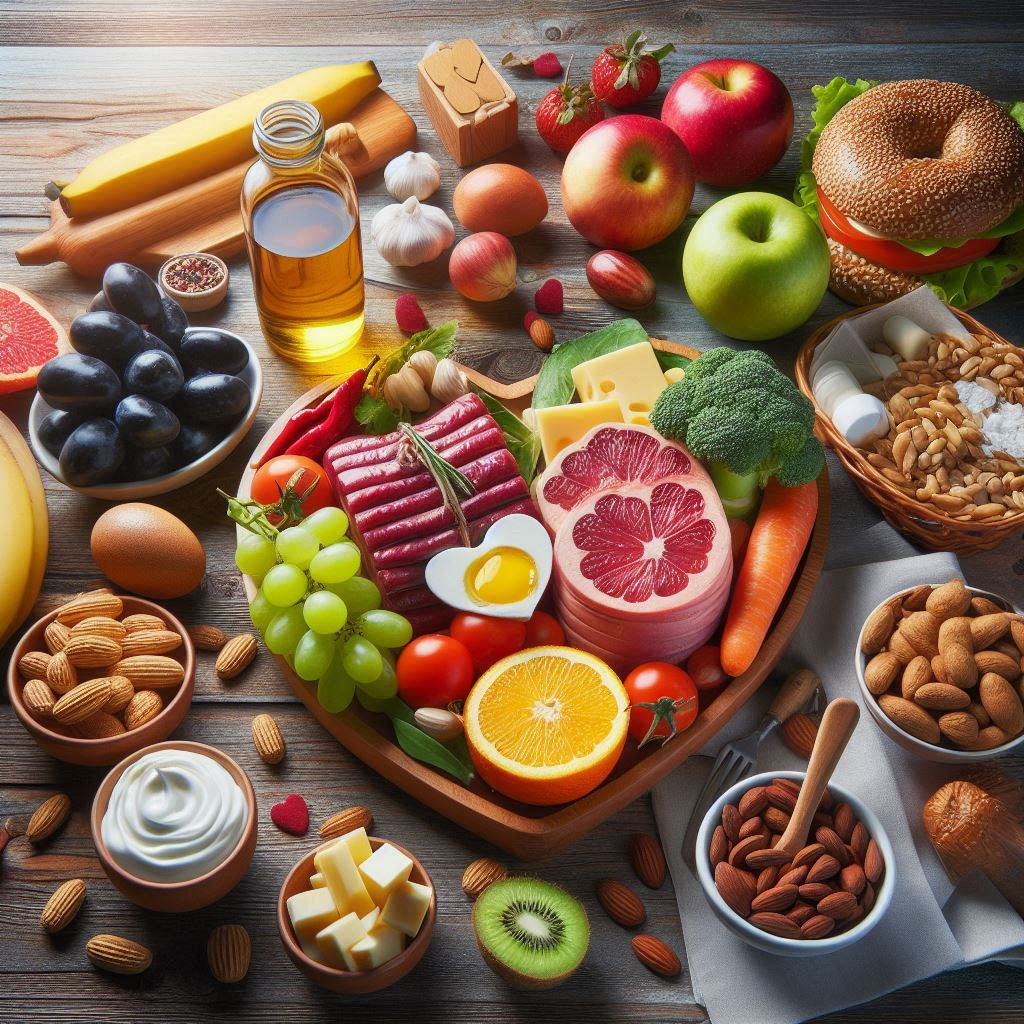
10 Vital Foods to Avoid for Better Cholesterol!
Discover 10 vital foods to avoid for improved cholesterol and heart health. Make informed dietary choices for better well-being. Including vital foods in your diet can help maintain a healthier cholesterol level.
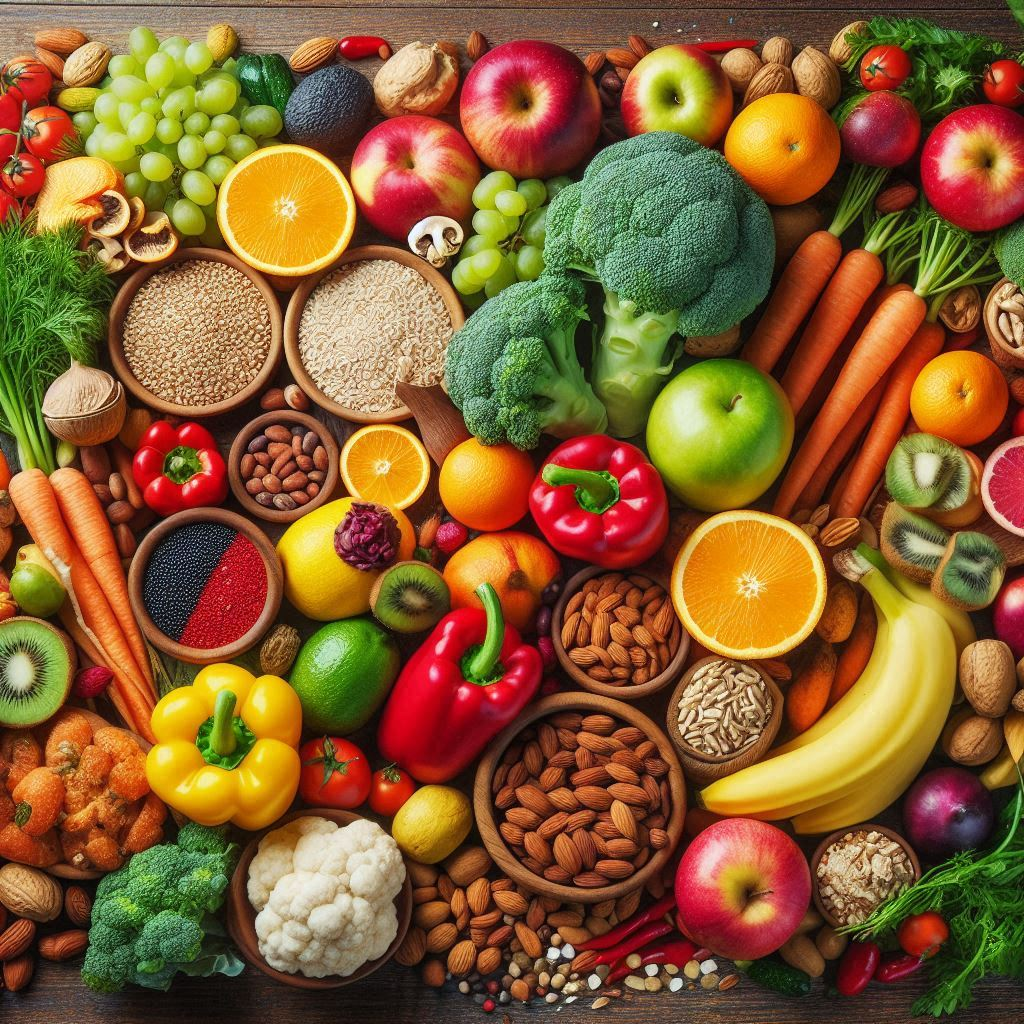

Understanding High Cholesterol and Its Impact on Health
High cholesterol is a significant health concern that affects millions of people worldwide. It’s a condition where your blood contains excessive amounts of lipids, particularly low-density lipoprotein (LDL) cholesterol, often referred to as “bad” cholesterol. When left unchecked, high cholesterol can lead to serious health complications, including an increased risk of heart disease and stroke.
Incorporating vital foods into your meals is essential for managing cholesterol effectively.
To maintain healthy cholesterol levels, focus on adding more vital foods that support your cardiovascular health.
Understanding the impact of high cholesterol on your health is crucial for taking proactive steps towards management and prevention. Elevated cholesterol levels can cause plaque buildup in your arteries, narrowing them and reducing blood flow to vital organs. This process, known as atherosclerosis, can lead to various cardiovascular issues, such as coronary artery disease, heart attacks, and peripheral artery disease.
Moreover, high cholesterol doesn’t typically present noticeable symptoms, earning it the moniker “silent killer.” Regular blood tests are essential for monitoring your cholesterol levels and assessing your risk. By understanding the potential consequences of high cholesterol, you’ll be better equipped to make informed decisions about your diet and lifestyle choices.
Vital foods like fruits, vegetables, and whole grains can greatly enhance your diet.
Identifying which vital foods to include in your daily intake is crucial for effective cholesterol management.
Combining these vital foods into your diet can help you make significant progress in managing cholesterol levels.
Make sure that among the foods you avoid, you also consider the vital foods that can help maintain a balanced diet.
Understanding the impact of vital foods in your diet can guide you in making healthier choices.
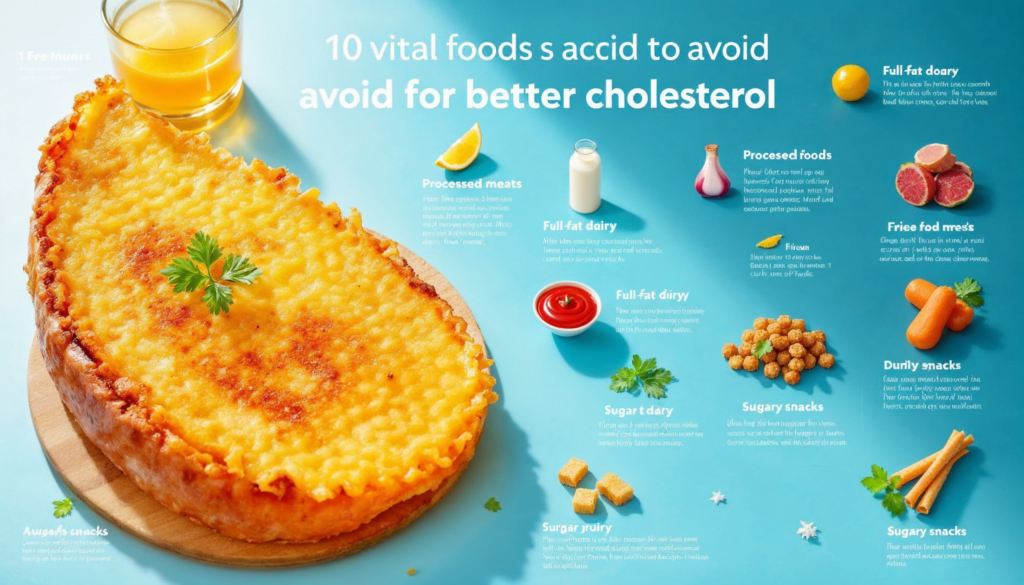
The Role of Diet in Managing Cholesterol Levels
Your diet plays a pivotal role in managing cholesterol levels. The foods you consume can directly influence the amount of cholesterol in your bloodstream, making dietary choices a powerful tool in your cholesterol management arsenal. By adopting a heart-healthy diet, you can significantly impact your cholesterol levels and overall cardiovascular health.
Recognizing the role of vital foods in lowering cholesterol is essential for heart health.
Some of the hidden sources of unhealthy fats can be countered by opting for vital foods.
Certain foods can help lower your cholesterol levels naturally. These include fiber-rich fruits and vegetables, whole grains, lean proteins, and foods high in omega-3 fatty acids. On the other hand, some foods can contribute to elevated cholesterol levels and should be limited or avoided altogether. Understanding which foods fall into each category is crucial for effective cholesterol management.
It’s important to note that dietary changes alone may not be sufficient for everyone to manage their cholesterol levels. In some cases, medication may be necessary in conjunction with lifestyle modifications. However, a well-balanced, cholesterol-conscious diet remains a fundamental component of any cholesterol management plan, regardless of whether medication is required.
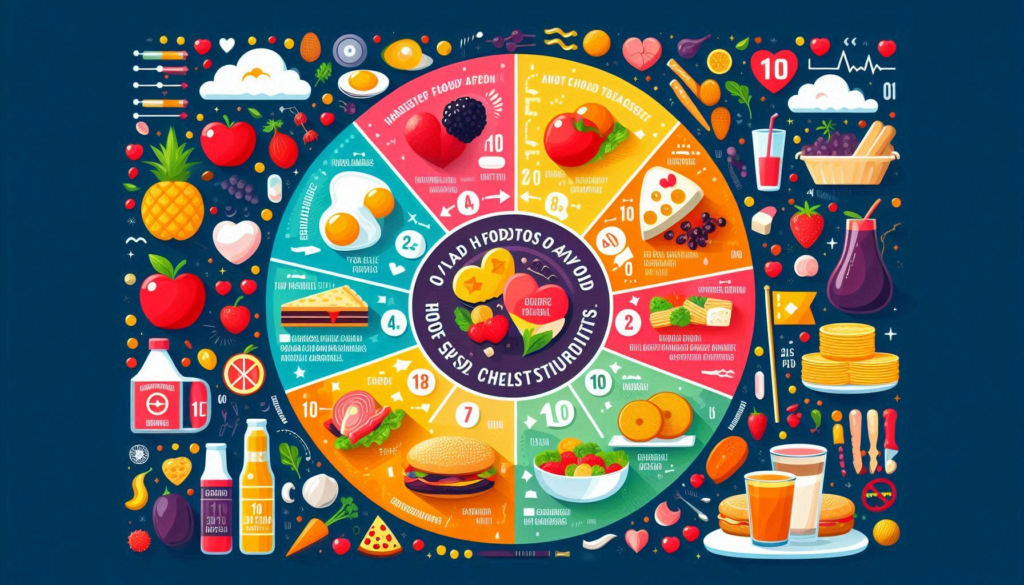
Top 10 Foods to Avoid for High Cholesterol Management
Incorporating vital foods into meals can help mitigate the effects of saturated fat.
Focus on vital foods to meet your dietary needs while keeping cholesterol in check.
Consider the contribution of vital foods to your heart-healthy cooking methods.
When it comes to managing high cholesterol, knowing which foods to avoid is just as important as knowing which foods to include in your diet. Here’s a list of the top 10 foods you should steer clear of to help maintain healthy cholesterol levels:
Trans fats can be substituted with vital foods that offer healthier alternatives.
Focus on foods that are low in trans fats while integrating more vital foods into your diet.
- Fried Foods: Deep-fried items like french fries, fried chicken, and doughnuts are high in trans fats and saturated fats, both of which can raise your LDL cholesterol levels.
- Processed Meats: Bacon, sausages, hot dogs, and deli meats are often high in saturated fats and sodium, contributing to elevated cholesterol and blood pressure.
- Full-Fat Dairy Products: Whole milk, cheese, and butter contain high levels of saturated fats that can increase your cholesterol levels.
- Baked Goods: Cookies, cakes, and pastries often contain trans fats and high amounts of sugar, which can negatively impact your cholesterol profile.
- Red Meat: Fatty cuts of beef, lamb, and pork are rich in saturated fats that can raise your LDL cholesterol levels.
- Coconut and Palm Oil: These tropical oils are high in saturated fats and should be used sparingly or avoided altogether.
- Fast Food: Many fast food items are high in trans fats, saturated fats, and calories, making them detrimental to cholesterol management.
- Shellfish: Some shellfish, like shrimp and lobster, are high in cholesterol and should be consumed in moderation.
- Egg Yolks: While eggs are nutritious, the yolks are high in cholesterol. Limit your intake or opt for egg whites instead.
- Packaged Snacks: Many chips, crackers, and other packaged snacks contain unhealthy fats and added sugars that can contribute to high cholesterol.
Seek to eliminate trans fats by adopting a diet rich in vital foods.
By avoiding or limiting these foods, you can take a significant step towards managing your cholesterol levels and improving your overall heart health.
Including vital foods in your diet can significantly lower your triglyceride levels.
Vital foods are also beneficial for managing triglyceride levels alongside cholesterol.
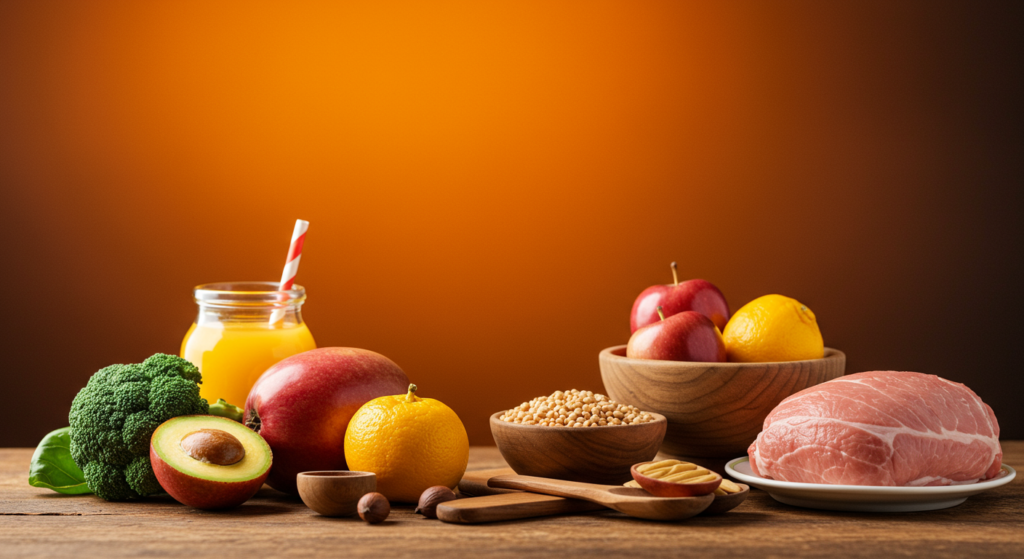
Hidden Sources of Unhealthy Fats in Everyday Foods
While some sources of unhealthy fats are obvious, others can be surprisingly sneaky. Many everyday foods contain hidden sources of unhealthy fats that can contribute to high cholesterol levels without you even realizing it. Being aware of these hidden sources is crucial for effective cholesterol management.
One common culprit is salad dressings. Many store-bought dressings are loaded with unhealthy oils, saturated fats, and even trans fats. Opt for homemade dressings using olive oil or vinegar instead. Similarly, condiments like mayonnaise and certain types of margarine can be high in unhealthy fats. Always check the labels and choose low-fat or fat-free alternatives when possible.
Choose vital foods that not only taste good but are also good for your heart.
Remember to balance your choices with vital foods to support heart health.
Processed foods are another major source of hidden unhealthy fats. Many packaged snacks, breakfast cereals, and even seemingly healthy granola bars can contain high levels of saturated or trans fats. Pay close attention to nutrition labels and ingredient lists to identify these hidden sources. Look out for terms like “partially hydrogenated oils,” which indicate the presence of trans fats.
Saturated Fat: The Primary Culprit in Raising Cholesterol
Saturated fat is widely recognized as one of the primary dietary factors contributing to high cholesterol levels. This type of fat is typically solid at room temperature and is found predominantly in animal-based foods. When consumed in excess, saturated fat can significantly raise your LDL cholesterol levels, increasing your risk of heart disease and stroke.
The American Heart Association recommends limiting saturated fat intake to no more than 5-6% of your total daily calories. For a 2,000-calorie diet, this translates to about 13 grams of saturated fat per day. To put this into perspective, a single slice of cheese pizza can contain up to 6 grams of saturated fat, nearly half the recommended daily limit.
To reduce your saturated fat intake, focus on lean proteins like fish, skinless poultry, and plant-based protein sources. When consuming dairy products, opt for low-fat or fat-free versions. Additionally, replace saturated fats in your cooking with healthier alternatives like olive oil or avocado oil. By making these simple swaps, you can significantly impact your cholesterol levels and overall heart health.
Trans Fats: Why They’re Bad and Where They Hide
Trans fats are considered the worst type of dietary fat for your cholesterol levels and overall health. These artificial fats are created through a process called hydrogenation, which turns liquid oils into solid fats. Trans fats not only raise your LDL (bad) cholesterol levels but also lower your HDL (good) cholesterol levels, creating a double negative impact on your cardiovascular health.
The FDA has banned artificial trans fats in the United States, but they can still be found in some processed foods. Look out for “partially hydrogenated oils” in ingredient lists, as this indicates the presence of trans fats. Some common hiding places for trans fats include:
- Packaged baked goods
- Frozen pizza
- Microwave popcorn
- Coffee creamers
- Stick margarines
To avoid trans fats, always read food labels carefully and choose products that explicitly state “0 grams trans fat” or “no trans fat.” However, be aware that products can claim to have zero trans fats if they contain less than 0.5 grams per serving. If you consume multiple servings, these small amounts can add up.
High-Triglyceride Foods and Their Effect on Cholesterol
While cholesterol often takes center stage in discussions about heart health, triglycerides are another type of blood fat that can significantly impact your cardiovascular well-being. High triglyceride levels, often accompanied by high cholesterol, can increase your risk of heart disease. Certain foods can raise your triglyceride levels, indirectly affecting your overall cholesterol profile.
Foods high in simple sugars and refined carbohydrates are major contributors to elevated triglyceride levels. These include:
- Sugary beverages
- White bread and pasta
- Cakes and cookies
- Alcohol, especially in excess
Consulting with a nutritionist can also help you identify vital foods for your diet.
Additionally, foods high in saturated and trans fats can also raise triglyceride levels. To manage both your cholesterol and triglyceride levels, focus on a diet rich in whole grains, lean proteins, and healthy fats like those found in nuts, seeds, and fatty fish.
Balancing Your Diet: Alternatives to High-Cholesterol Foods
Adopting a low-cholesterol diet doesn’t mean you have to sacrifice flavor or satisfaction. There are numerous delicious and nutritious alternatives to high-cholesterol foods that can help you maintain a balanced diet while managing your cholesterol levels. Here are some smart swaps you can make:
| High-Cholesterol Food | Heart-Healthy Alternative |
|---|---|
| Whole milk | Skim milk or plant-based milk |
| Butter | Olive oil or avocado spread |
| Red meat | Lean poultry or fish |
| Fried foods | Baked or grilled options |
| Cheese | Low-fat cheese or nutritional yeast |
| Ice cream | Greek yogurt with fresh fruit |
| Eggs | Egg whites or egg substitutes |
| Creamy salad dressings | Vinaigrette or lemon juice |
By making these simple substitutions, you can significantly reduce your intake of saturated fats and cholesterol while still enjoying a varied and flavorful diet. Remember, the key is to focus on whole, unprocessed foods and to prepare them using heart-healthy cooking methods like grilling, baking, or steaming.
The Importance of Reading Food Labels for Cholesterol Control
Mastering the art of reading food labels is crucial for effective cholesterol management. Food labels provide valuable information about the nutritional content of packaged foods, including their cholesterol, saturated fat, and trans fat content. By understanding how to interpret this information, you can make informed decisions about which foods to include in your diet and which to avoid.
When reading food labels, pay particular attention to:
- Serving Size: All nutritional information is based on the serving size listed. Be aware that your portion may be larger or smaller than the serving size indicated.
- Total Fat: Look at the breakdown of saturated and trans fats. Aim to minimize these as much as possible.
- Cholesterol: The daily value (DV) for cholesterol is 300 mg. Foods with 5% DV or less are considered low in cholesterol, while those with 20% DV or more are high.
- Fiber: Foods high in fiber can help lower cholesterol levels. Look for products with at least 3 grams of fiber per serving.
- Ingredient List: Ingredients are listed in order of quantity. Be wary of products where unhealthy fats or oils are listed near the beginning.
By becoming proficient in reading and understanding food labels, you’ll be better equipped to make heart-healthy choices and effectively manage your cholesterol levels through your diet.
Make sure you include plenty of vital foods to nourish your body and manage cholesterol.
By choosing vital foods wisely, you can significantly impact your heart health.
Lifestyle Changes to Complement a Low-Cholesterol Diet
Every healthy choice you make, including the addition of vital foods, counts.
While diet plays a crucial role in managing cholesterol levels, it’s important to remember that lifestyle factors also significantly impact your heart health. Complementing your low-cholesterol diet with positive lifestyle changes can enhance your efforts and lead to better overall results. Here are some key lifestyle modifications to consider:
- Regular Exercise: Engage in at least 150 minutes of moderate-intensity aerobic activity or 75 minutes of vigorous-intensity aerobic activity per week. Regular exercise can help raise your HDL (good) cholesterol levels and lower LDL (bad) cholesterol.
- Maintain a Healthy Weight: Being overweight or obese can increase your risk of high cholesterol. Losing even a small amount of weight can have a positive impact on your cholesterol levels.
- Quit Smoking: Smoking lowers your HDL cholesterol and increases your risk of heart disease. Quitting can improve your cholesterol profile and overall cardiovascular health.
- Limit Alcohol Consumption: Excessive alcohol intake can raise your cholesterol and triglyceride levels. If you drink, do so in moderation—up to one drink per day for women and up to two drinks per day for men.
- Manage Stress: Chronic stress can contribute to unhealthy behaviors that may raise cholesterol levels. Practice stress-reduction techniques like meditation, yoga, or deep breathing exercises.
By incorporating these lifestyle changes alongside your dietary modifications, you can create a comprehensive approach to managing your cholesterol levels and improving your overall heart health.
Heart-Healthy Eating Habits for Long-Term Cholesterol Management
Developing heart-healthy eating habits is essential for long-term cholesterol management. These habits go beyond simply avoiding certain foods; they involve creating a sustainable and enjoyable approach to eating that supports your cardiovascular health. Here are some key habits to cultivate:
- Embrace the Mediterranean Diet: This eating pattern, rich in fruits, vegetables, whole grains, lean proteins, and healthy fats, has been shown to improve cholesterol levels and reduce the risk of heart disease.
- Practice Portion Control: Even healthy foods can contribute to weight gain and elevated cholesterol when consumed in excess. Use smaller plates, measure your portions, and be mindful of serving sizes.
- Cook More Meals at Home: By preparing your own meals, you have greater control over the ingredients and cooking methods used, allowing you to make heart-healthy choices.
- Increase Fiber Intake: Aim for at least 25-30 grams of fiber per day. Soluble fiber, found in foods like oats, beans, and apples, can help lower cholesterol levels.
- Choose Lean Proteins: Opt for fish, skinless poultry, legumes, and plant-based protein sources over red meat and processed meats.
- Snack Smartly: Replace high-fat, high-sugar snacks with healthier options like fresh fruits, vegetables with hummus, or a small handful of nuts.
By consistently practicing these heart-healthy eating habits, you can create a sustainable approach to managing your cholesterol levels and improving your overall cardiovascular health.
Consulting with a Nutritionist: Personalized Cholesterol-Lowering Diets
While general guidelines for a heart-healthy diet are beneficial, consulting with a registered dietitian or nutritionist can provide you with personalized advice tailored to your specific needs and health goals. A nutrition professional can help you create a customized meal plan that takes into account your current cholesterol levels, overall health status, food preferences, and lifestyle factors.
During a consultation, a nutritionist may:
- Assess your current diet and eating habits
- Review your medical history and any medications you’re taking
- Analyze your body composition and nutritional needs
- Provide education on reading food labels and making heart-healthy choices
- Develop a personalized meal plan that fits your lifestyle and preferences
- Offer strategies for overcoming challenges and maintaining motivation
Working with a nutritionist can be particularly beneficial if you have multiple health conditions, food allergies, or specific dietary restrictions. They can help you navigate these complexities while still focusing on lowering your cholesterol levels.
Remember, managing high cholesterol is a long-term commitment, and having professional guidance can make the process more effective and sustainable. Don’t hesitate to seek expert advice to support your journey towards better heart health.
Success Stories: Real-Life Experiences in Lowering Cholesterol Through Diet
Real-life success stories can be incredibly motivating and inspiring when you’re working to manage your cholesterol levels through dietary changes. Here are a few examples of individuals who have successfully lowered their cholesterol through diet and lifestyle modifications:
- Sarah, 45: By adopting a plant-based diet rich in whole grains, legumes, and vegetables, Sarah lowered her total cholesterol by 50 points in just three months. She also incorporated regular exercise into her routine, which helped boost her HDL (good) cholesterol levels.
- John, 58: After being diagnosed with high cholesterol, John replaced his usual red meat-heavy diet with lean proteins like fish and poultry. He also increased his intake of soluble fiber through oats and beans. Within six months, his LDL cholesterol dropped by 30%, and he was able to avoid medication.
- Maria, 62: Maria struggled with high cholesterol for years. By working with a nutritionist, she learned to cook heart-healthy meals at home and make smarter choices when dining out. Combined with daily walks, these changes helped her lower her total cholesterol by 15% in four months.
These stories highlight the power of dietary changes in managing cholesterol levels. While individual results may vary, they demonstrate that with commitment and the right approach, significant improvements in cholesterol levels are achievable through diet and lifestyle modifications.
Conclusion: Empowering Yourself for Better Heart Health
Managing high cholesterol through diet is a powerful way to take control of your heart health. By understanding which foods to avoid, making smart substitutions, and adopting heart-healthy eating habits, you can significantly impact your cholesterol levels and reduce your risk of cardiovascular disease.
Remember, achieving better heart health is a journey, not a sprint. It requires patience, consistency, and a willingness to make long-term lifestyle changes. Celebrate small victories along the way, and don’t get discouraged by temporary setbacks. Every healthy choice you make is a step towards better heart health.
As you continue on this path, consider regularly monitoring your cholesterol levels to track your progress. This can provide valuable feedback and motivation to keep going. Additionally, don’t hesitate to seek support from healthcare professionals, nutritionists, or support groups. They can provide guidance, answer questions, and offer encouragement throughout your journey.
Take the first step towards better heart health today. Start by making one small change in your diet, such as swapping out a high-cholesterol food for a heart-healthy alternative. Remember, every positive choice counts. If you’re unsure where to begin or need personalized advice, consider scheduling a consultation with a registered dietitian or your healthcare provider. Your heart will thank you for it!
By empowering yourself with knowledge and making conscious choices about your diet, you’re not just managing your cholesterol levels—you’re investing in a healthier, more vibrant future. Here’s to your heart health!

